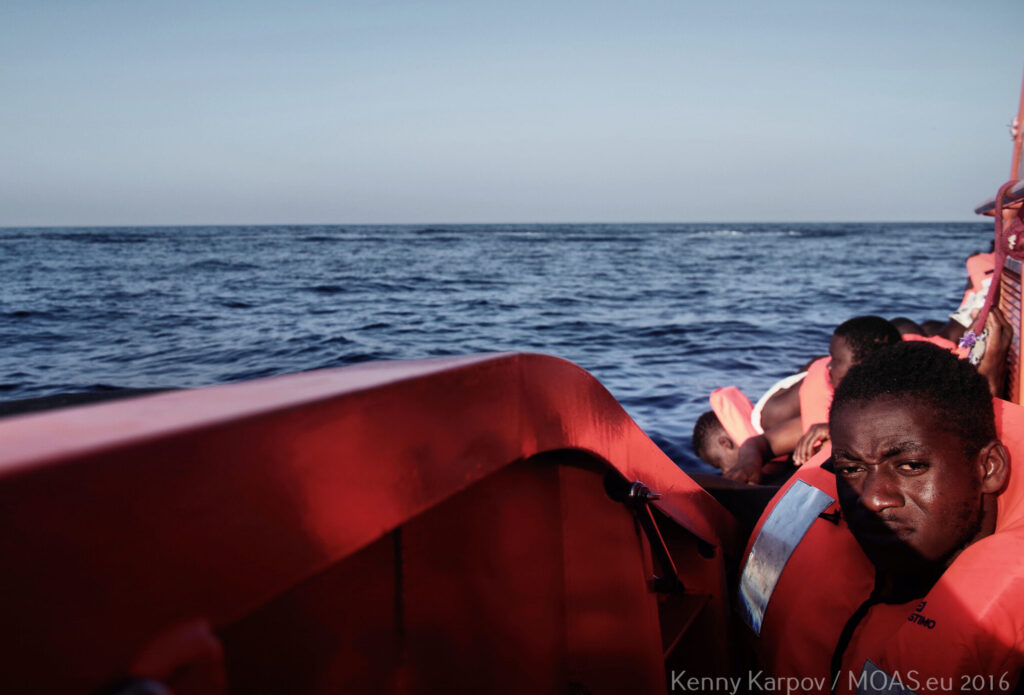The last two years have seen a dramatic growth in displaced and refugees worldwide. Migration patterns and routes duplicate due to global crises, which have operated as a multiplicator of vulnerability for millions. In 2020, according to the International Organization for Migration, the number of migrants reached 280 million people, representing 3.60% of the world population and figures are on the rise. Regional wars, internal conflicts, climate change, and human trafficking connected to economic needs are pushing forward the impellent need for a comprehensive response by the EU.
Polycrisis pushes millions of people to leave their homes
The interconnections between local and international crises as well as the numbers of humanitarian hot spots globally are increasingly impacting a growing number of people marking a turning point in migration history for the European Union. Increasing economic and social imbalances, dramatic changes in climate patterns, the geopolitical reshaping of entire regions, and the weaponisation of migrations have also concurred with the trend. 2022 recorded an increase of 64% in detections of irregular border crossing by the EU member states and a 58% increase in asylum-seekers applications. According to data provided by international organisations, there are no signs of a change in the trend during 2023, with the EU will stay on top as a primary destination for migrants.
A revival of Western Balkans and Mediterranean migration routes
Migrants transiting from the Balkans Route and the Central Mediterranean Route recorded 75% of all detections of border crossings into the EU during 2022. Growing instability, conflicts, and economic fallout in many low and medium-income countries following the covid pandemic forced many to attempt the crossing to the Schengen Zone increasing the migratory pressure. Visa-free access in Tunisia and Lybia for important nationalities has also shaped a massive growth in the migration patterns in these two routes.
The long-tail effects of the pandemic in low-income countries
The rising cost of living and growing prices in the global food supply chain are also reasons for food insecurity in many nations, leading to an increase in migration flows. Following the war in Ukraine, countries worldwide have experienced a skyrocketing growth in the price of food and energy, leaving many in poverty. The international community and the EU should focus on supporting the countries most affected by high prices through the implementation of food production and the agricultural sector. The goal is to help nations to be more resilient to sudden changes in the international market as an essential factor in reducing migration in 2023.
A new wave of refugees from Ukraine
One year after the Russian military operations in Ukraine, 7.9 million Ukrainians have fled to Europe, and 4.9 million have registered for Temporary Protection or similar schemes in the EU. The targeting of Ukraine’s energy system by the Russian Army affected 18 million Ukrainians that are now at risk and in urgent need of humanitarian support. Although few left the country, the spike in violence could lead according to different scenarios to a new wave of refugees that may range from 500,000 to a peak of 4 million people during 2023.
Addressing the instrumentalisation of migration by third countries
In 2023, the EU will have to deal with attempts to instrumentalise migrants as a means of hybrid aggression. As pointed out by the ICMPD’s latest report, in a move that will stir European migration concerns, the Russian government has recently announced it will increase the number of flights from North Africa and the Middle East to the Russian enclave of Kaliningrad, which borders Poland. Consequently, it will likely result in more migrants attempting to enter the EU by a different route rather than the typical crossing points, as already seen during the crisis between Belarus and Poland.
The implementation of #SafeAndLegalRoutes to manage the migration phenomenon
As a result of the anticipated rise in migration flows, it is becoming increasingly clear that the current approach to managing migration through border control and pushbacks is not a sustainable or ethical solution. To address this issue, the EU institutions and Member States must establish a system of #SafeAndLegalRoutes, which would enable people residing in crisis-stricken regions to reach their destination countries safely and without putting their lives at risk. MOAS is actively promoting this vision through our #SafeandLegalRoutes campaign, which emphasises the need for secure and legal migration pathways, such as humanitarian corridors, student, medical and humanitarian visas, and private sponsorships. The management of global migration is a complex and contentious challenge that cannot be effectively addressed within the confines of the current system. Therefore, it is imperative to adopt a more comprehensive and human-centric framework of #SafeAndLegalRoutes. This would save lives and provide greater protection and dignity to migrants in their pursuit of safety or a better life.
To support MOAS’ campaign for Safe and Legal Routes sign up for our online petition now: https://www.moas.eu/safe-and-legal-routes/
If you are interested in the work of MOAS and our partners, please follow us on social media, sign up to our newsletter and share our content. You can also reach out to us any time via [email protected]. If you want to support our operations, please give what you can at www.moas.eu/donate.

